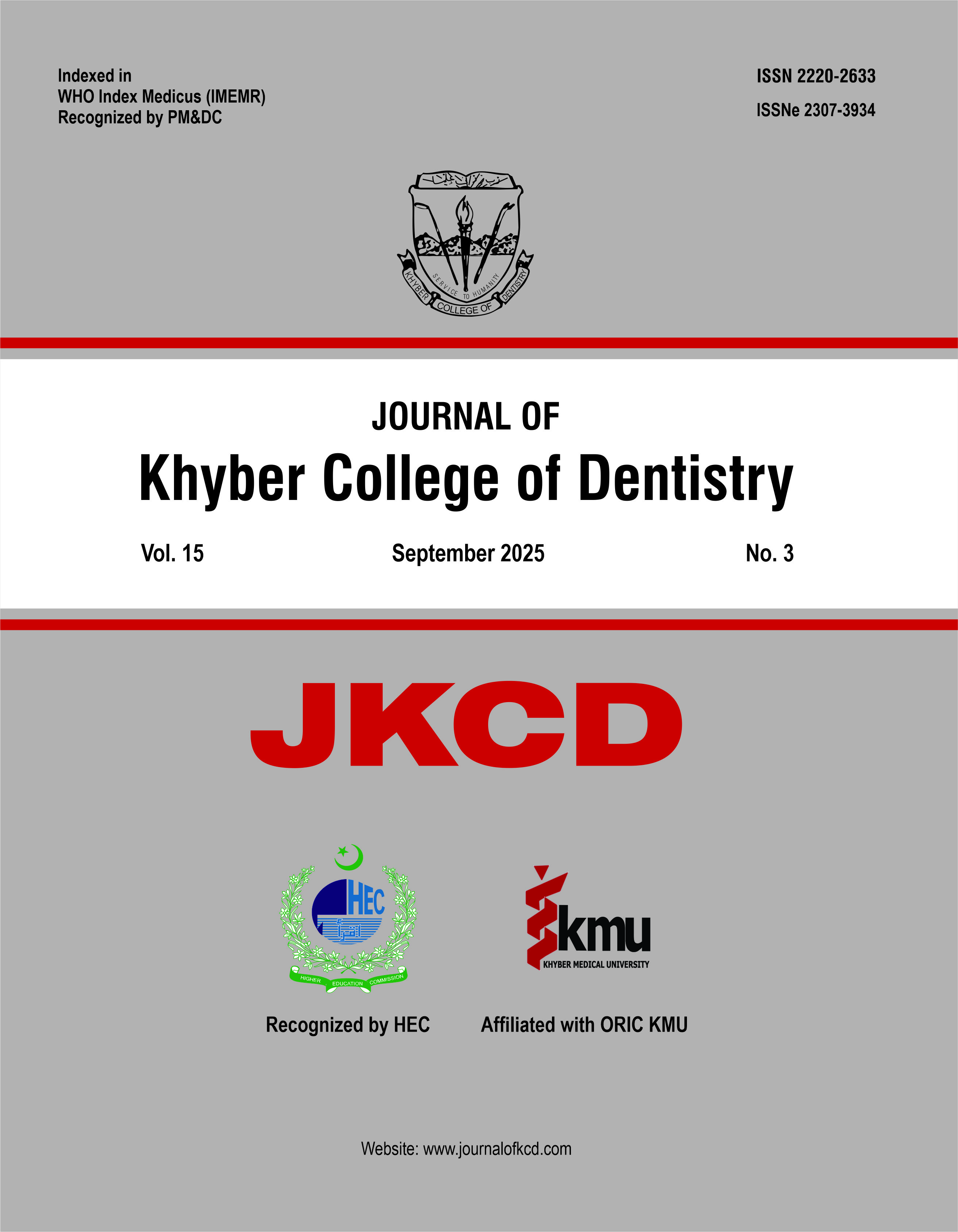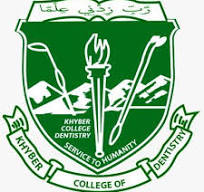INNOVATING ORAL HEALTH IN SCHOOL OF PESHAWAR: A VISION FOR CHANGE
DOI:
https://doi.org/10.33279/jkcd.v15i03.957Abstract
Oral diseases such as dental caries and periodontal conditions remain among the most prevalent chronic health issues affecting children globally. In Peshawar, clinical observations and regional surveys consistently reveal high rates of untreated caries and poor oral hygiene among school-aged children. Despite the global success of school-based oral health programs, Peshawar lacks a sustained, preventive framework within its educational institutions.
Schools offer a strategic platform for health promotion, yet oral health efforts are often limited to intermittent dental camps. This fragmented approach underscores a broader disconnect between dental institutions, public health authorities, and the education sector. The region’s leading academic and clinical center, dental institutions are uniquely positioned to catalyze change through structured partnerships with schools.
Integrating oral health into the school system via regular screenings, fluoride varnish applications, and age-appropriate education for children can significantly reduce disease burden and treatment costs. Moreover, such initiatives provide dental students with meaningful exposure to community-based care, aligning with national goals for preventive health.
Investing in school-based oral health is not merely a public health intervention; it is a commitment to equity, prevention, and the well-being of future generations. With strong institutional leadership and cross-sector collaboration, Peshawar can transform a missed opportunity into a model of integrated care.
Downloads
Published
How to Cite
Issue
Section
License
Copyright (c) 2025 Aliya Khan

This work is licensed under a Creative Commons Attribution-NonCommercial 4.0 International License.
You are free to:
- Share — copy and redistribute the material in any medium or format
- Adapt — remix, transform, and build upon the material
- The licensor cannot revoke these freedoms as long as you follow the license terms.
Under the following terms:
- Attribution — You must give appropriate credit , provide a link to the license, and indicate if changes were made . You may do so in any reasonable manner, but not in any way that suggests the licensor endorses you or your use.
- NonCommercial — You may not use the material for commercial purposes .
- No additional restrictions — You may not apply legal terms or technological measures that legally restrict others from doing anything the license permits.










